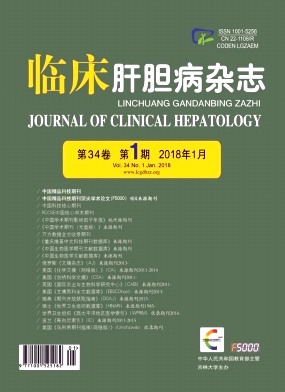|
[1]BROWN DB, GESCHWIND JF, SOULEN MC, et al.Society of Interventional Radiology position statement on chemoembolization of hepatic malignancies[J].J Vasc Interv Radiol, 2009, 20 (7 Suppl) :s317-s323.
|
|
[2]GESCHWIND JF, RAMSEY DE, CLEFFKEN B, et al.Transcatheter arterial chemoembolization of liver tumors:effects of embolization protocol on injectable volume of chemotherapy and subsequent arterial patency[J].Cardiovasc Intervent Radiol, 2003, 26 (2) :111-117.
|
|
[3]IKEDA M, MAEDA S, SHIBATA J, et al.Transcatheter arterial chemotherapy with and without embolization in patients with hepatocellular carcinoma[J].Oncology, 2004, 66 (1) :24-31.
|
|
[4]LLOVET JM, REAL MI, MONTANA X, et al.Arterial embolisation or chemoembolisation versus symptomatic treatment in patients with unresectable hepatocellular carcinoma:a randomised controlled trial[J].Lancet, 2002, 359 (9319) :1734-1739.
|
|
[5]MAEDA S, FUJIYAMA S, TANAKA M, et al.Survival and local recurrence rates of hepatocellular carcinoma patients treated by transarterial chemolipiodolization with and without embolization[J].Hepatol Res, 2002, 23 (3) :202-210.
|
|
[6]RHEE TK, YOUNG JY, LARSON AC, et al.Effect of transcatheter arterial embolization on levels of hypoxia-inducible factor-1alpha in rabbit VX2 liver tumors[J].J Vasc Interv Radiol, 2007, 18 (5) :639-645.
|
|
[7]XIONG ZP, YANG SR, LIANG ZY, et al.Association between vascular endothelial growth factor and metastasis after transcatheter arterial chemoembolization in patients with hepatocellular carcinoma[J].Hepatobiliary Pancreat Dis Int, 2004, 3 (3) :386-390.
|
|
[8]ZENG SS.Current status of transcatheter arterial chemoembolization in the treatment of hepatocellular carcinoma[J].China Med Herald, 2016, 13 (33) :56-59, 63. (in Chinese) 曾姗姗.经肝动脉化疗栓塞术治疗肝细胞癌的研究进展[J].中国医药导报, 2016, 13 (33) :56-59, 63.
|
|
[9]van BEERS BE, LECONTE I, MATERNE R, et al.Hepatic perfusion parameters in chronic liver disease:dynamic CT measurements correlated with disease severity[J].AJR Am J Roentgenol, 2001, 176 (3) :667-673.
|
|
[10]LIN YY, LEE RC, TSENG HS, et al.Objective measurement of arterial Flow before and after transcatheter arterial chemoembolization:a feasibility study using quantitative color-coding analysis[J].Cardiovasc Intervent Radiol, 2015, 38 (6) :1494-1501.
|
|
[11]WANG J, GUAN X, ZHAO L, et al.Objective assessment of the endpoint of transcatheter arterial chemoembolization using color-coded digital subtraction angiography[J].Chin J Radiol, 2014, 48 (9) :758-761. (in Chinese) 王嵇, 管逊, 赵亮, 等.二维彩色编码DSA技术评估经导管动脉化疗栓塞最佳状态的价值[J].中华放射学杂志, 2014, 48 (9) :758-761.
|
|
[12]QIAN T, CHEN M, GAO F, et al.Diffusion-weighted magnetic resonance imaging to evaluate microvascular density after transarterial embolization ablation in a rabbit VX2 liver tumor model[J].Magn Reson Imaging, 2014, 32 (8) :1052-1057.
|
|
[13]QIAN T, YIN HB.Research advances in functional MRI for evaluating the efficacy of transcatheter arterial chemoembolization for liver cancer[J].Chin J Radiol, 2013, 47 (7) :669-670. (in Chinese) 钱亭, 尹化斌.功能MRI评价肝癌经肝动脉灌注化疗栓塞术疗效的研究进展[J].中华放射学杂志, 2013, 47 (7) :669-670.
|
|
[14]HUANG YL, ZHOU YM, TONG SJ, et al.i Flow in the auxiliary diagnosis of cerebral vascular disease[J].Chin J Interv Imaging Ther, 2011, 8 (5) :401-404. (in Chinese) 黄远亮, 周玉明, 童绥君, 等.i Flow成像辅助诊断脑血管性病变[J].中国介入影像与治疗学, 2011, 8 (5) :401-404.
|
|
[15]LOU WS, GU JP, SU HB, et al.Hemodynamic changes of lower extremity peripheral arterial disease following interventional therapy:primary application of i Flow quantitative evaluation[J].Chin J Radiol, 2015, 49 (1) :57-60. (in Chinese) 楼文胜, 顾建平, 苏浩波, 等.i Flow软件量化评估下肢动脉阻塞性疾病血流改变的价值[J].中华放射学杂志, 2015, 49 (1) :57-60.
|
|
[16]QIU W, LI P, GUO X, et al.Preliminary study of i Flow application in lower extremity vascular disease[J].Chin J Thorac Cardiovasc Surg, 2016, 32 (1) :22-24. (in Chinese) 邱威, 李彭, 郭曦, 等.i Flow技术治疗下肢血管疾病的初步研究[J].中华胸心血管外科杂志, 2016, 32 (1) :22-24.
|
|
[17]QIU W, LI P, LIU GR, et al.Value of i Flow auxiliary technique in evaluating the efifciency of Chimney stent in left subclavian artery during TEVAR[J].J Vasc Endovasc Surg, 2016, 2 (1) :45-49, 54. (in Chinese) 邱威, 李彭, 刘光锐, 等.i Flow技术于TEVAR术中辅助判断左锁骨下动脉烟囱支架植入疗效[J].血管与腔内血管外科杂志, 2016, 2 (1) :45-49, 54.
|







 DownLoad:
DownLoad: